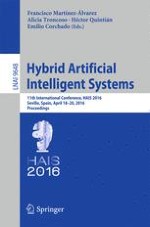2016 | OriginalPaper | Buchkapitel
A Proposed Methodology for Setting the Finite Element Models Based on Healthy Human Intervertebral Lumbar Discs
verfasst von : Fatima Somovilla Gomez, Ruben Lostado Lorza, Roberto Fernandez Martinez, Marina Corral Bobadilla, Ruben Escribano Garcia
Erschienen in: Hybrid Artificial Intelligent Systems
Aktivieren Sie unsere intelligente Suche, um passende Fachinhalte oder Patente zu finden.
Wählen Sie Textabschnitte aus um mit Künstlicher Intelligenz passenden Patente zu finden. powered by
Markieren Sie Textabschnitte, um KI-gestützt weitere passende Inhalte zu finden. powered by
